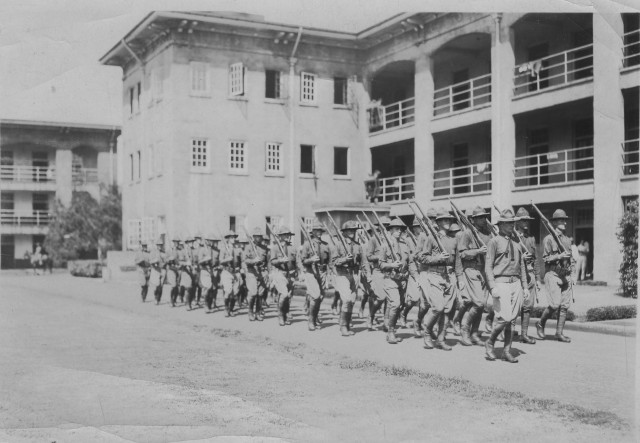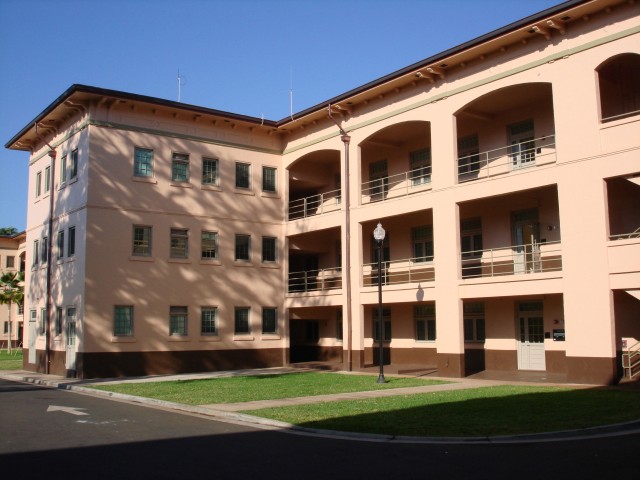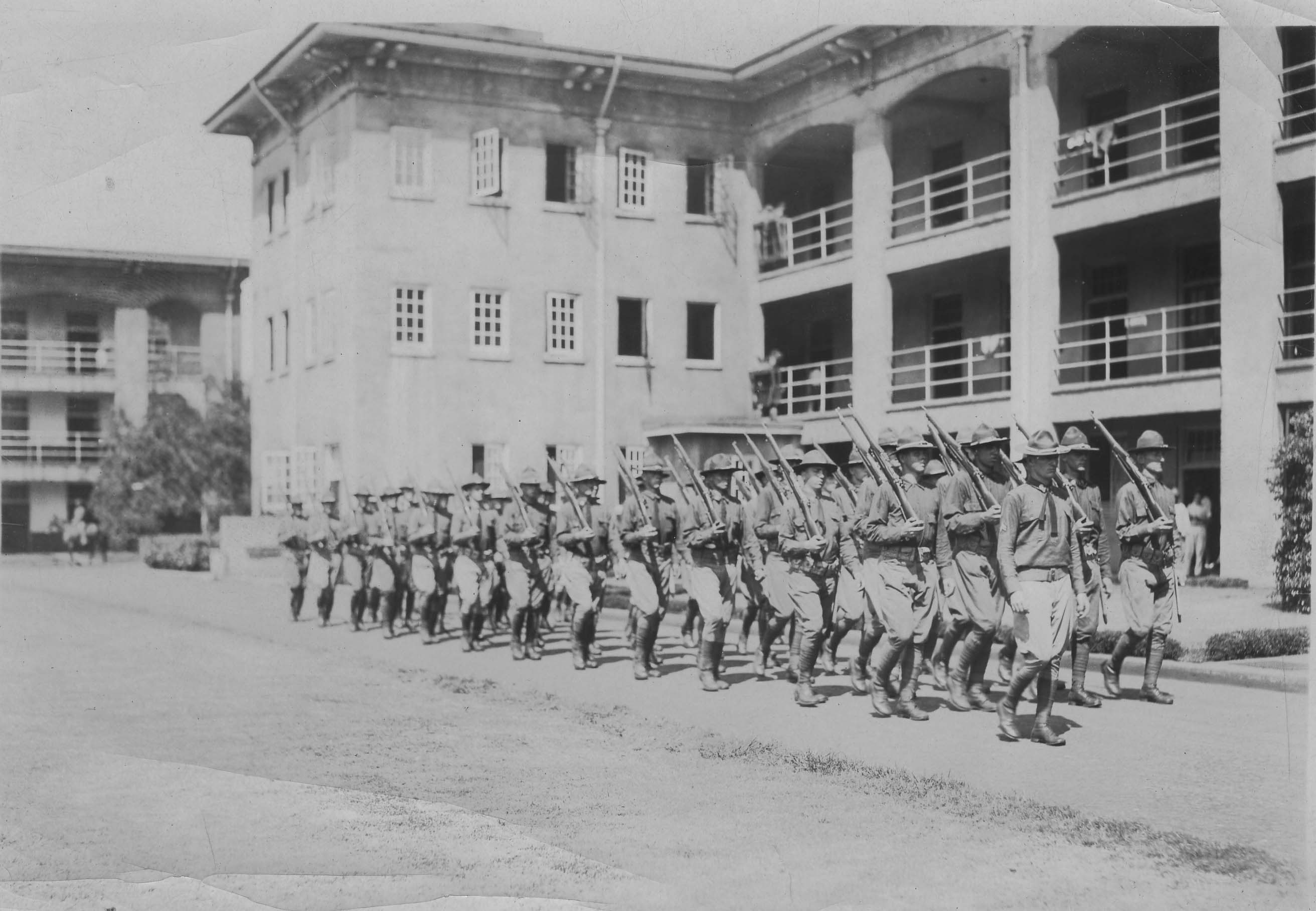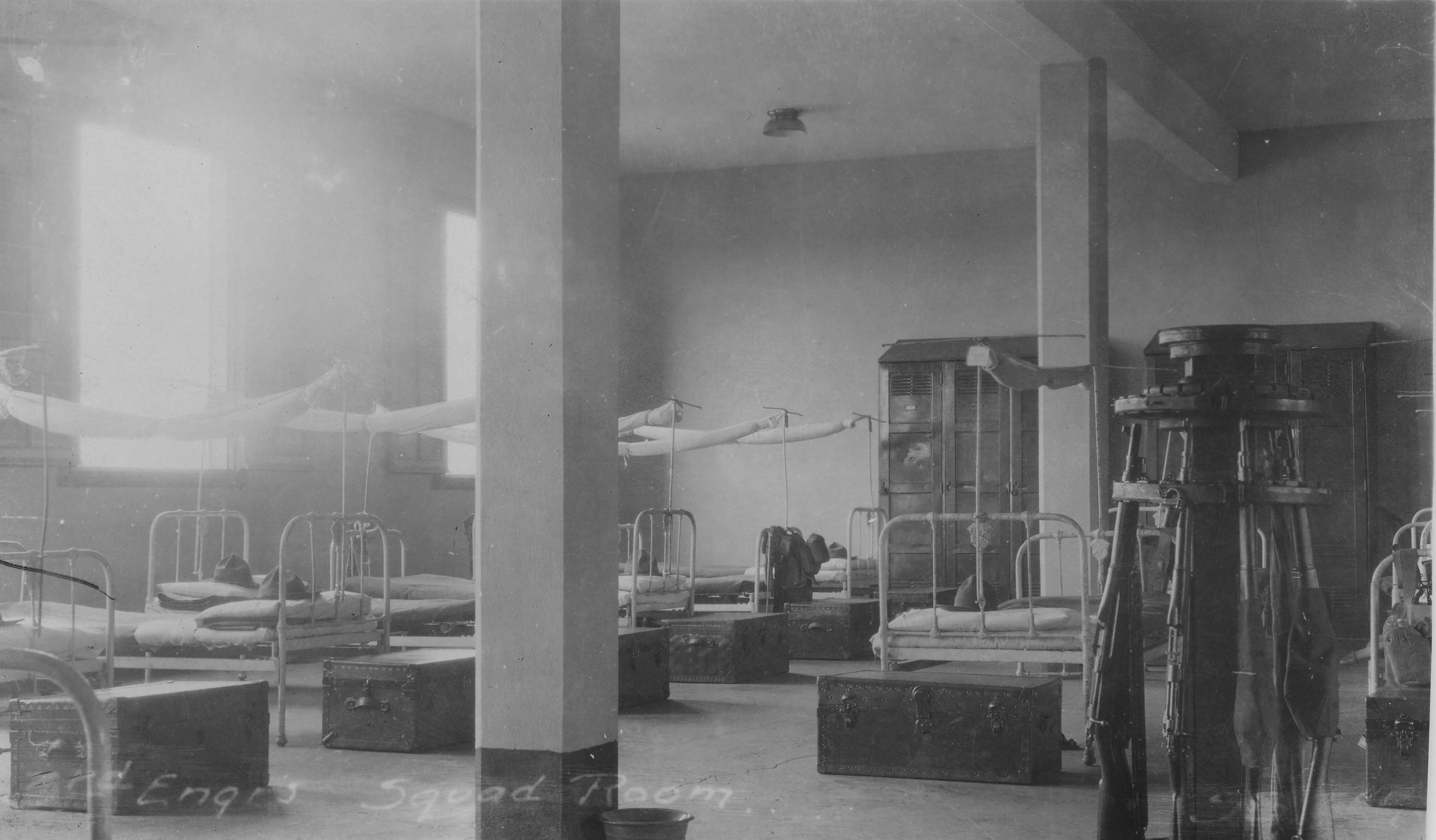SCHOFIELD BARRACKS, Hawaii - Old photographs are fun to look at because they show how people and places have changed over time. However, if you compared an old photo of Schofield's historic troop barracks (known as the quads) to the actual buildings today, you would be hard-pressed to tell the difference.
The Army and the Historic Hawaii Foundation couldn't be happier.
The Historic Hawaii Foundation presented U.S. Army Garrison, Hawaii (USAG-HI) with a Preservation Honor Award, Thursday, for the garrison's rehabilitation of Schofield's historic Quads C and E, which date to 1916 and 1920, respectively.
"The recipients of the awards demonstrate various ways to make history come alive and to create tangible connections between the past and the present," Kiersten Faulkner, executive director of the Historic Hawaii Foundation, said in a release. "While each project is different, all are exemplary in demonstrating how preservation builds community."
The rehabilitation effort maintains the barracks' historic significance while, at the same time, providing Soldiers with all the modern conveniences in the interior renovations.
The U.S. Army Corps of Engineers (USACE), as well as contractors Nan Inc., Mason Architects Inc., and Architects Hawaii, were also honored for their support.
"We're very proud of the preservation work done by our contractors and our project managers for the U.S. Army Garrison, Hawaii, in the rehabilitation of these historic quads," said Lt. Col. Charles H. Klinge, commander, Honolulu District, USACE.
<b>The devil is in the details</b>
The renovation of Quads C and E began in 2003, and while most of the effort involved a great deal of manpower, there was quite a bit of "bookpower" involved, too.
Ken Hays, the USAG-HI architectural historian, conducted extensive research, searching out photographs and drawings of the quads so that the team would know what features were necessary to bring the buildings back to their historic state, displaying them correctly.
Cornices, lanais, guard railings, lighting, windows and even gutters and paint colors were scrutinized and restored; however, the restoration was no easy task, according to Hays. Several hurdles popped up along the way.
First, restoration is a very detailed process, so it took some "coaching" to convince everyone involved about the importance of restoring each of the features.
Second, a number of the materials and designs needed are not common or even produced any more.
"We had to translate all of these 'needs' into new modern materials that meet antiterrorism/force protection standards, in particular for the windows and the doors," Hays said. "Getting those manufactured to historic standards was quite a challenge."
Finally, the team had to come up with several creative workarounds to balance today's needs with historical accuracy. A good example was the lighting pattern.
For safety and security, the quads need brighter lighting now than they needed or had in the early 1900s. However, affixing brighter lights to the walls of modern-day quads would destroy the historical accuracy of the buildings.
"We came up with a lighting plan that really became invisible on the buildings when you look at them," Hays said. "Now all the lights are mounted on the inside surface of the columns, so when the viewer is looking he really doesn't see any lights at all; they're hidden.
"We had to work out a lot of details like that," Hays added.
<b>Roots of the family tree</b>
Legally, federal agencies have an obligation to preserve their historic structures to the maximum extent possible. On a more human level, though, the renovations preserve the legacy of the barracks, which have been "kind of the anchor of Schofield operations since they were built," according to Hays.
As well as being a part of national history, the quads are part of state and local history. They've served Soldiers through every major conflict, taking a few bullets themselves.
The quads have also been featured in films like "From Here to Eternity."
"There's a great tradition I think for the Soldiers that live here," Hays said. "I've had many of the Soldiers come up and tell me that their dad, their granddad and even great granddads have been in these quads."
Hays also added that some units, like the Wolfhounds in Quad D, have lived and worked in the same quad since it was built.
<b>Barracks of old come of age</b>
Behind every successful preservation effort, one still has to address the current occupants' needs, and the Army continues to meet this challenge head on.
While the exteriors of Quads C and E look very much like they did in 1916 and 1920, the interior is a stark difference. Gone are the days of multi-person bathrooms and rows of bunk beds.
Now the rooms in these quads are designed to meet the Army's "1 + 1" standard; each Soldier has a private room and two Soldiers share a common/kitchen area and bathroom.
"This really is a model of how preservation can work, and it works kind of perfectly because everybody wins," Hays said. "The Soldiers live to a very high standard...they have extremely nice living quarters, and the heritage of the Army, the state and the nation gets preserved."
In total, Schofield Barracks has eight historic quads. The Army is renovating five quads and demolishing three, which will be replaced with new barracks.
All of this construction is part of the Army's Whole Barracks Renewal (WBR) Program at Schofield - a more than 10-year, $1 billion-plus effort to improve the quality of life for single Soldiers.








Social Sharing